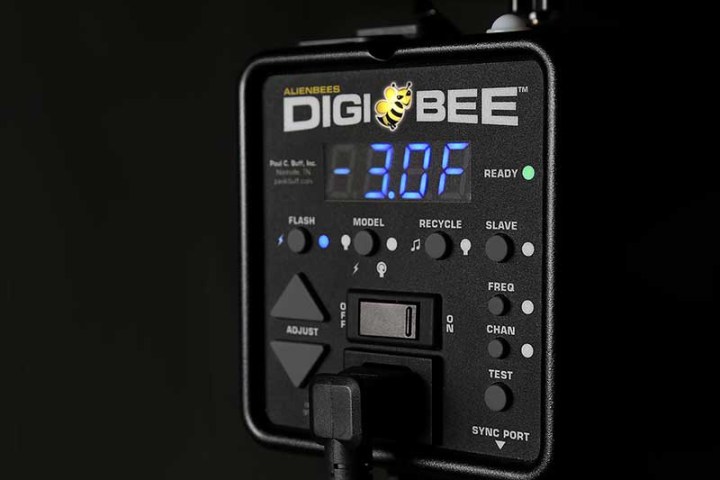
The lights have lost more than a few inches since Paul C Buff’s last Einstein flashes in 2010, with the DigiBees measuring about half the size of AlienBees. Despite the smaller size, the flashes haven’t lost any power, thanks to a switch to LED lights. The DB400 offers power from 2.5 to 160 watts, while the DB800 has a 5 to 320 watt range, with slower recycle times. Along with that big change, the DigiBees also have a wider range by one stop, allowing for a much lower minimum power setting.
The switch to LEDs also make the lights more efficient. While the DigiBees don’t have their own battery, the DB400 is rated for 2,000 flashes and the DB800 is rated for 1,000 from a Vagabond battery — or about an hour and a half of continuous light.
Recycle times stay relatively put compared to the earlier lights. The DB400 offers a pretty solid, though not best-in-class half-second spec, with just half that time needed when using the light at half power. The more powerful DB800 needs a full second to recover and fire off another burst of light.
And in case the “Digi” in DigiBee doesn’t clue you in, the backs of the light are now digital, with an LED screen displaying the light’s power level.
While the DigiBees don’t have their own battery or offer high-speed sync, they do come in at a price point that’s rather affordable considering they’re coming from a high-end brand. The faster but less powerful DB400 is priced at $309.95, while the more powerful (but slower) DB800 is $349.95. They’re not designed to replace the more powerful, more expensive Einstein flashes, but they expand the company’s range of options at a lower price point.






